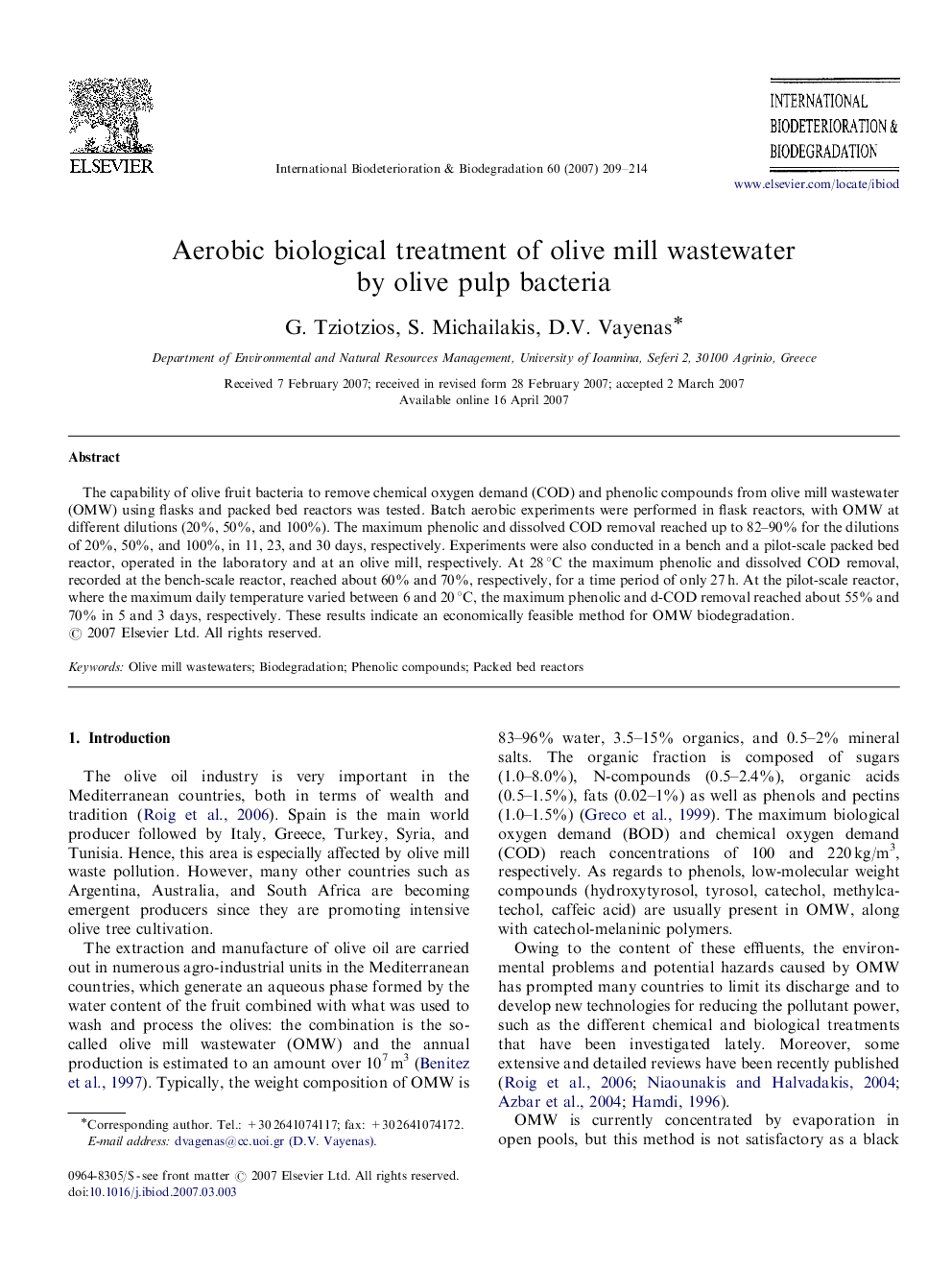| Article ID | Journal | Published Year | Pages | File Type |
|---|---|---|---|---|
| 4365807 | International Biodeterioration & Biodegradation | 2007 | 6 Pages |
The capability of olive fruit bacteria to remove chemical oxygen demand (COD) and phenolic compounds from olive mill wastewater (OMW) using flasks and packed bed reactors was tested. Batch aerobic experiments were performed in flask reactors, with OMW at different dilutions (20%, 50%, and 100%). The maximum phenolic and dissolved COD removal reached up to 82–90% for the dilutions of 20%, 50%, and 100%, in 11, 23, and 30 days, respectively. Experiments were also conducted in a bench and a pilot-scale packed bed reactor, operated in the laboratory and at an olive mill, respectively. At 28 °C the maximum phenolic and dissolved COD removal, recorded at the bench-scale reactor, reached about 60% and 70%, respectively, for a time period of only 27 h. At the pilot-scale reactor, where the maximum daily temperature varied between 6 and 20 °C, the maximum phenolic and d-COD removal reached about 55% and 70% in 5 and 3 days, respectively. These results indicate an economically feasible method for OMW biodegradation.
